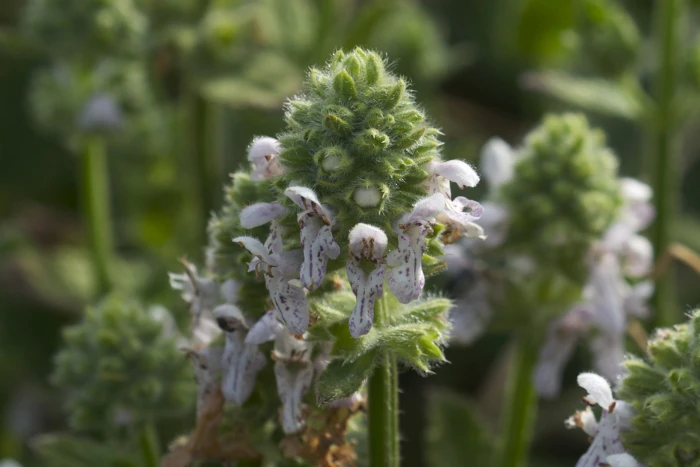Shortspike Hedgenettle
(Stachys pycnantha)
Shortspike Hedgenettle (Stachys pycnantha)
/
/

Eric in SF
CC BY-SA 3.0
Image By:
Eric in SF
Recorded By:
Copyright:
CC BY-SA 3.0
Copyright Notice:
Photo by: Eric in SF | License Type: CC BY-SA 3.0 | License URL: https://creativecommons.org/licenses/by-sa/3.0 | Uploader: Eric in SF | Publisher: Wikimedia Commons | Title: Stachys_pycnantha.jpg | Notes: Transferred from en.wikipedia |






















Estimated Native Range
Climate Requirements for Phoenix, Arizona
| This Plant | Your Site | Plant Suitability for Your Location | ||
|---|---|---|---|---|
| • Precipitation | 50" - 61" | 9" | Your precipitation may be insufficient for this plant. Irrigate N" / year. | Irrigate N" / year |
| • High Temp. | 77°F - 93°F | 106°F | Your summers may be too hot for this plant. | Too hot |
| • Low Temp. | 32°F - 40°F | 41°F | Your winter temperatures are normal for this plant | Excellent |
This plant should grow well at your location with about N inches per year (Y minutes per month) of irrigation.
Summary
Stachys pycnantha, commonly known as Shortspike Hedgenettle, is a perennial herb in the mint family. It is native to riparian zones, moist meadows, and forest clearings in western North America. The plant typically grows to a height exceeding 60 centimeters and is characterized by its hairy, glandular, and aromatic stems. The leaves are lance-shaped or oval with short petioles. During the summer, Shortspike Hedgenettle produces purple flowers that are modestly showy, arranged in a single cluster or a few interrupted clusters, with each cluster containing up to 12 flowers.
Shortspike Hedgenettle is valued for its aromatic foliage and purple flowers, which can add sensory appeal to garden settings. It is suitable for naturalistic plantings, wildlife gardens, and as a component of pollinator-friendly landscapes. The plant is adaptable to a range of water conditions and can thrive in full sun to part shade, making it versatile for various garden designs. It prefers soils with varying drainage rates, from slow to fast. While generally low-maintenance, it can be susceptible to root rot in overly wet conditions and may require good soil aeration.CC BY-SA 4.0
Shortspike Hedgenettle is valued for its aromatic foliage and purple flowers, which can add sensory appeal to garden settings. It is suitable for naturalistic plantings, wildlife gardens, and as a component of pollinator-friendly landscapes. The plant is adaptable to a range of water conditions and can thrive in full sun to part shade, making it versatile for various garden designs. It prefers soils with varying drainage rates, from slow to fast. While generally low-maintenance, it can be susceptible to root rot in overly wet conditions and may require good soil aeration.CC BY-SA 4.0
Plant Description
- Plant Type: Herb
- Height: 1-2 feet
- Width: 1-3 feet
- Growth Rate: Moderate
- Flower Color: Purple, White, Yellow
- Flowering Season: Summer
- Leaf Retention: Deciduous
Growth Requirements
- Sun: Full Sun, Part Shade
- Water: Medium
- Drainage: Slow, Fast, Medium
Common Uses
Bee Garden, Bird Garden, Butterfly Garden, Deer Resistant, Drought Tolerant, Erosion Control, Fragrant, Hummingbird Garden, Low Maintenance, Rabbit Resistant
Natural Habitat
Native to riparian zones, moist meadows, and forest clearings in western North America
Other Names
Common Names:
Scientific Names: Stachys pycnantha
GBIF Accepted Name: Stachys pycnantha Benth.